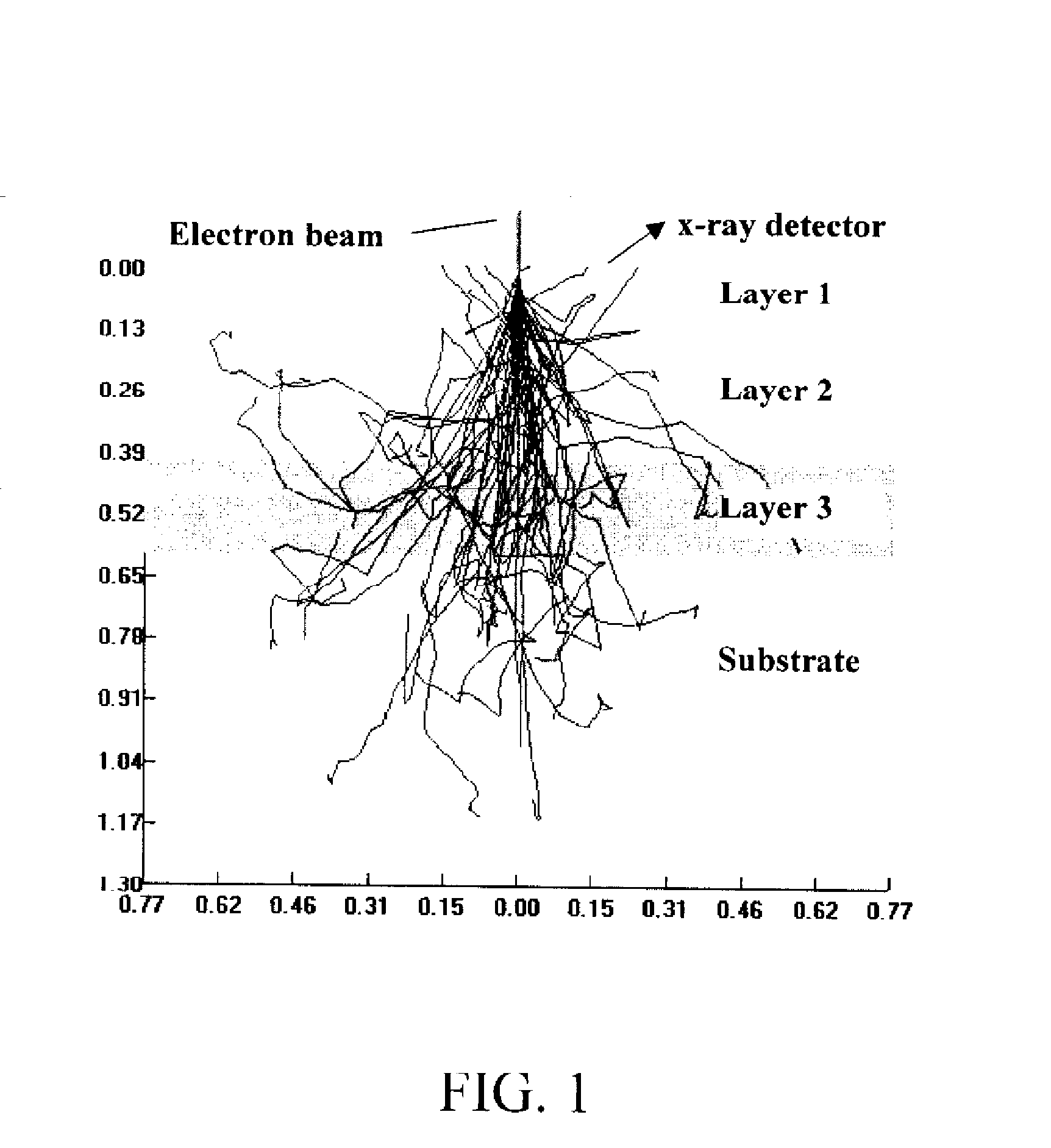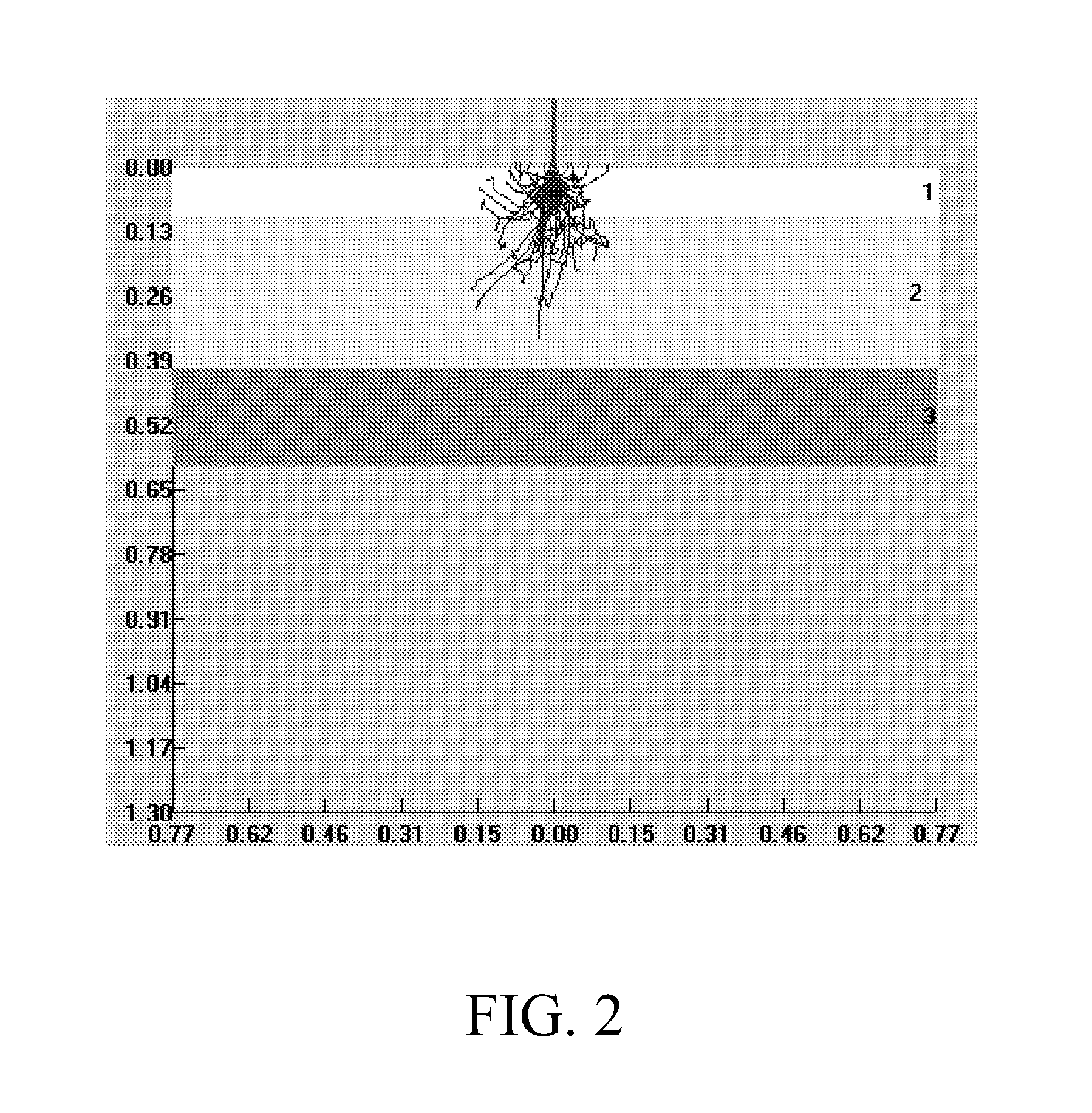Method of calculating the structure of an inhomogeneous sample
- Summary
- Abstract
- Description
- Claims
- Application Information
AI Technical Summary
Benefits of technology
Problems solved by technology
Method used
Image
Examples
Embodiment Construction
[0043]An overview of a physical system 1 for performing a structure analysis process of inhomogeneous samples (such as thin films) is shown in FIG. 3. The system comprises a scanning electron microscope (SEM) 2 having an x-ray analysis system 3, this being an INCA Energy x-ray analysis system (manufactured by Oxford Instruments Analytical Limited). The SEM has a chamber 4 containing a specimen holder 5 which can be tilted. An incident beam of electrons is emitted by an electron gun 6, this being focused upon a specimen 10 held within the specimen holder. Characteristic x-rays that are emitted as a result of the electron beam are detected by a detector 11 forming part of the x-ray analysis system 3. The SEM 2 includes a control computer 15 upon which software is executed to control the operation of the system 1. This computer can control the kV used to accelerate electrons from the electron gun 6 and thus alter the energy for the focused electron beam striking the specimen. To analys...
PUM
 Login to View More
Login to View More Abstract
Description
Claims
Application Information
 Login to View More
Login to View More - R&D Engineer
- R&D Manager
- IP Professional
- Industry Leading Data Capabilities
- Powerful AI technology
- Patent DNA Extraction
Browse by: Latest US Patents, China's latest patents, Technical Efficacy Thesaurus, Application Domain, Technology Topic, Popular Technical Reports.
© 2024 PatSnap. All rights reserved.Legal|Privacy policy|Modern Slavery Act Transparency Statement|Sitemap|About US| Contact US: help@patsnap.com










